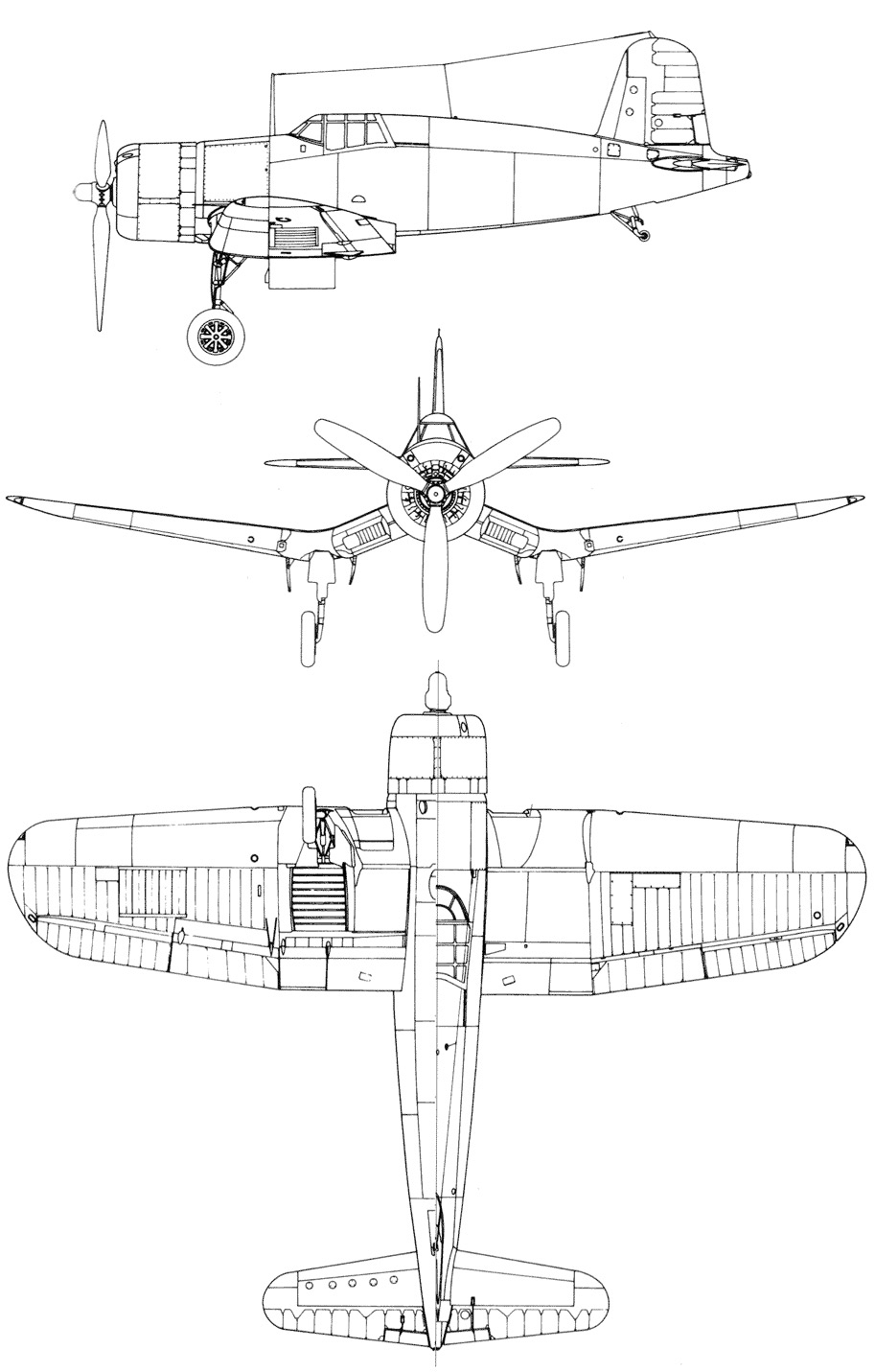

One of the main features during development was the incorporation of the largest engine available, the Pratt & Whitney R-2800 V-18 Double Wasp of 2250 hp, requiring the installation of a wide three-blade Hamilton propeller. Even so, the Corsair required improvements while in service, which does not deny the fact that it was one of the greatest and unique airplanes of the war, let alone a good complement to other aircraft carrier-based fighters and among the best naval fighters in the war. The Corsair was a pretty advanced aircraft for the times, and this characteristic meant that its development would find several problems that required solution, which in turn, were quite remarkable. That same year, Vought – the builder company – was awarded a contract to start with the development of the Corsair.


Interestingly, the initial requirements comprised the aircraft to carry anti-aircraft bombs to be dropped on enemy formations. The development of the Corsair began following a request by the US Navy for twin and single-engine fighters in 1938, with the single-engine required to obtain the maximum speed possible and a stalling speed of no more than 110 km/h (70 mph), and a long range. The Corsair is single-seat and single engine fighter/fighter-bomber for day and night-time, featuring a characteristic inverted gull wing (Similar to that of the Junkers Ju-87 Stuka and the Loire-Nieuport 40) and a very long propeller-blade. The Corsair contributed to change the balance over the skies of the Pacific by shooting down many Mitsubishi A6M Zeros, although not as much as the Grumman F6F Hellcat.

It also saw some service in the Atlantic during WWII, mainly with the British Fleet Air Arm, where reportedly provided air cover to the airplanes attacking the battleship Tirpitz, and served in the Indian and Pacific Oceans. It saw also action during the Korea War as a ground attack and Close Air Support (CAS) aircraft, and with the French in the Indochina, Algeria, and Suez Canal crisis. This airplane in particular was specifically designed for aircraft carriers, being a naval aircraft in essence, although initial doubts over its performance on-board an aircraft carriers made it to serve initially as a land-based asset. The F4U Corsair is another most famous fighter and fighter-bomber of WWII, although it saw action mostly against the Japanese in the Theatre of the Pacific, therefore being primarily used by the US Navy and the Marines.


 0 kommentar(er)
0 kommentar(er)
